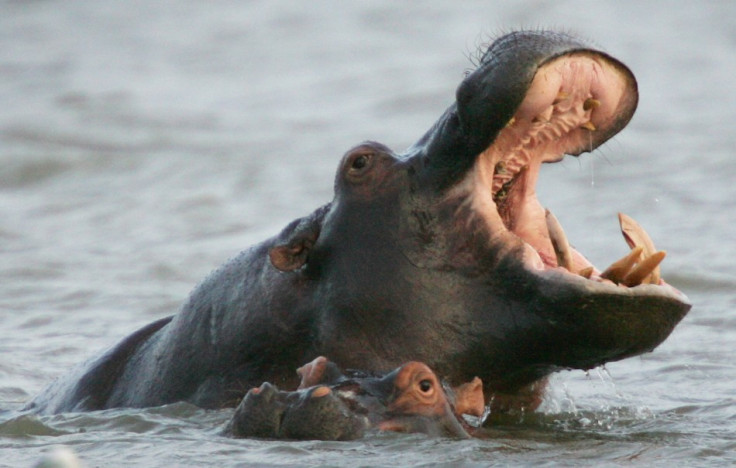Hippos Swam the Thames while Elephants and Rhinos Roamed Prehistoric Europe

Elephants, rhinoceroses and aurochs (an extinct species of cattle) once roamed the forests of Europe, while hippopotamuses lived in the Thames and the Rhine, according to research.
Studies on the fossils of dung beetles have revealed that temperate ecosystems in Europe consisted of a mosaic of forest and parkland, rather than just dense forest as originally believed.
Published in the journal Proceedings of the National Academy of Sciences, biologists from Denmark synthesised decades of studies on fossil beetles, focusing on beetles associated with the dung of large animals or with woodlands and trees.
Fossil evidence also suggests that macque monkeys lived in London, notably in Essex, around three quarters of a million years ago. Hippopotamuses also resided in the Thames.
Dr Sarah Elton of Hull York Medical School said: "It was a bit warmer, maybe a Mediterranean climate".
The findings reveal that dung beetles were much more frequent in the previous interglacial period, between 132,000 and 110,000 years ago, compared with the early Holocene era (the present interglacial period, before agriculture, from 10,000 to 5,000 years ago).
Prof Jens-Christian Svenning explained that the appearance of humans coincided with the decline of large wild animals.
He said: "Large animals in high numbers were an integral part of nature in prehistoric times. The composition of the beetles in the fossil sites tells us that the proportion and number of the wild large animals declined after the appearance of modern man. As a result of this, the countryside developed into predominantly dense forest that was first cleared when humans began to use the land for agriculture."
Chris Sandom, a postdoctoral fellow, added: "One of the surprising results is that woodland beetles were much less dominant in the previous interglacial period than in the early Holocene, which shows that temperate ecosystems consisted not just of dense forest as often assumed, but rather a mosaic of forest and parkland."
The study was funded in part by the 15 June Foundation and a grant from the European Research Council. To a large extent, scientists behind the study support the idea that the rewilding-based approach to nature management (restoring habitats to their natural state) should be incorporated to a far greater degree in nature policy in Europe –especially in the case of national parks and other large natural areas.
Rasmus Ejrnæs, a senior scientist behind the study, said an important way to create a more self-managing ecosystem with a high level of biodiversity was to make room for large herbivores in the European landscape. One way to do this would be to introduce animals such as wild cattle, bison and even elephants.
Ejrnæ added: "They would create and maintain a varied vegetation in temperate ecosystems, and thereby ensure the basis for a high level of biodiversity. If people want to restore self-managing varied landscapes, they can draw on the knowledge provided by the new study about the composition of natural ecosystems in the past."
© Copyright IBTimes 2025. All rights reserved.






















